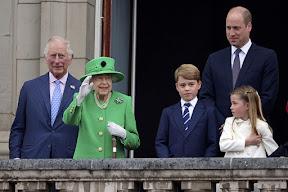One of my favorite Smithsonian museums to visit in D.C. is the National Museum of American History. I was gobsmacked at the wonderful and informative exhibits and artifacts the museum housed, including a large statue of George Washington in a Roman robe (that was once located under the Capital's Rotunda). The museum showcases the evolution of our nation's history (including economic growth, presidents & political discourse, and military/foreign affairs) and melting-pot culture. Below are several photographs of exhibits from the museum that I found particularly interesting. Enjoy!
Joshua V. Chanin is a AP U.S. History Teacher at Coppell High School. He previously taught at A&M-Commerce. Mr. Chanin received his bachelor's degree from Austin College, where he was awarded the Folbre Prize in History, and later earned his master's degree from the University of Texas at Arlington. Mr. Chanin is author of a biography on education reformer Sallie Brooke Capps. Please email at joshuathehistorian@gmail.com if you have any questions about TX history. Enjoy the blog!
Sunday, January 29, 2023
Tuesday, January 24, 2023
National African American History Museum - D.C.
One of the most interesting museums my wife and I visited in Washington D.C. during our March 2022 trip was the National Museum of African American History and Culture. The facility is operated by the Smithsonian and is the newest museum on the National Mall. Opened by President Obama in 2016, the African American history museum showcases a variety of fantastic exhibits on the history of the Atlantic Slave Trade, Civil War, segregation and the Civil Rights Movement, black veterans and politicians, and African American schools. Since this was the only Smithsonian museum that I had not been to in the past (I visited our nation's capital with my family in 2007), the African American history museum was on my to-go list. I thoroughly enjoyed walking the floors and absorbing historical and cultural content that I can weave into my future lesson plans -- as a dedicated U.S. history teacher I am constantly looking for new ways to "beef up" my diverse curriculum. I enjoy discussing African American history with my students since blacks greatly contributed to the creation of the United States we know of today. Below, I have posted some of the museum artifacts I found to be fascinating. I would highly recommend visiting this marvelous treasure trove of black history and culture!!
Monday, January 2, 2023
Goodbye 2022, Hello 2023!
2022 was a fantastic year! Here is a sum of what happened: Professionally, I had three online articles published (in French Quarter Magazine, North Texas e-News & Texas Escapes Magazine), partook in two podcast interviews, presented research on the City of Coppell at a history conference, and my ebook on a photographic history of A&M-Commerce was published. In 2023, I plan to write a scholarly article on a history of Coppell ISD (the school district I currently work in - I am incredibly blessed to have a great job and surrounded by incredible veteran educators!). Personally, I proudly watched my wife graduate with her PhD in statistics from Rice University, we purchased our first house (and paid too much for it owing to the messy housing market in the 2022 summer, but we love it), and I officiated my best friends' wedding in Rockwall. Since I am a hard-working individual, I intend to continue giving back to my community and giving advice/inspiration to future generations of leaders in 2023. After a much-needed winter break (I did not work much on my laptop, to much surprise), I am ready to roll into the new year with an unlimited amount of enthusiasm for teaching, eagerness to learn from peers and scholars, and continue to fuel my passion for history!! It was a fun year (with minor challenges) and am tremendously excited for the next year!
Happy New Year! (I will continue to post on this blog regularly in 2023)
 |
| Merry Christmas & Happy New Year from the Chanin family (plus our cute pets)!! (author's collections) |
-
"Every life is a march from innocence, through temptation, to virtue or vice." -Lyman Abbott I always stress in my classes that h...
-
Re-post from original blog: One of the most catastrophic events in Grayson County’s history was the Sherman tornado of 1896 (a little over...
-
At the entrance/exit of Downtown Greenville, a large, illuminating sign that read "Greenville Welcome: The Blackest Land, The Whitest P...























.jpeg)



